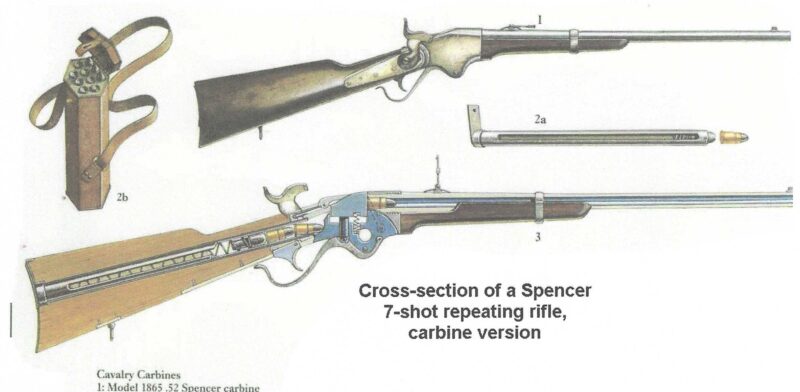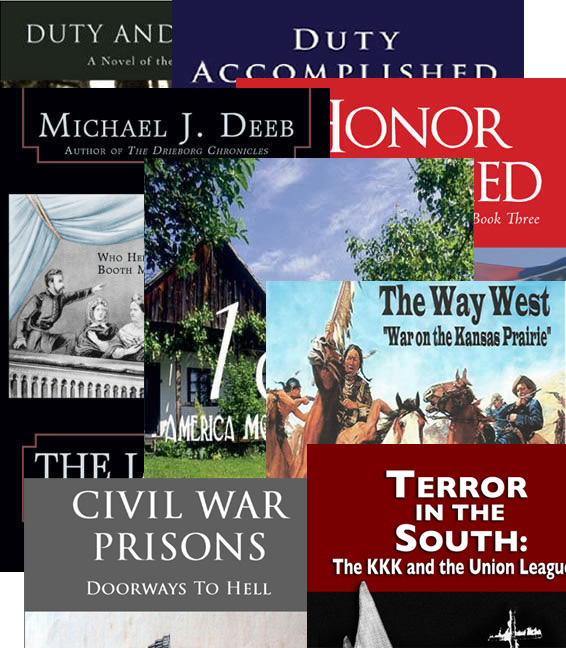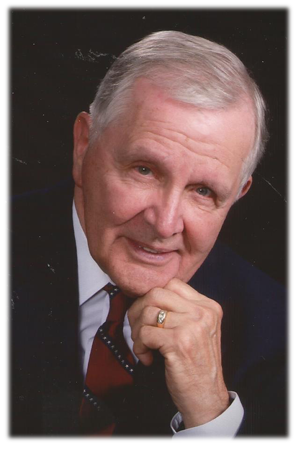Civil War Arms: The Rifle
The Situation
It is estimated that over 720,000 military personnel died during the Civil War. Of those, 300,000 died due to combat wounds. Most of these deaths were inflicted by the combat rifle. Early in the war, most of the rifles used were: .58 caliber, muzzle-loading smooth bore rifles, using a Minni-bullet. The bullet & powder was encased in paper. Three rounds fired per minute constituted rapid fire, firing accurately for 50 to 100 yards. The traditional tactic was to fire a round and charge the enemy with bayonets. The hope was that you would cross the distance to the enemy line before those soldiers could reload.
Result:
Since ancient times many battles were decided by rushing ranks of closely-aligned men at one another. But since colonial times, the side which could fire fastest at a greater distance would usually win the battle.
Civil War Union’s Problem:
The Bureau of Ordinance headed by General James W. Ripley was responsible for approving the types of weapons purchased. This general favored smooth-bore, muzzle loading rifles to breech loaded weapons. He argued that his priority was keeping the waste of ammunition to a minimum and to assure reliability of fire. Over 1.5 million of the Springfield Muzzle loaders shown below were in use during the war, mostly by the Union.

Lincoln argued:
“But our people are not getting close enough to the enemy to do any good with them (muzzle loaders). We’ve got to get guns that carry further.”
Solution?
The Union introduced the rifled barrel which increased the range. But accuracy was a serious problem as was vision since smoke masked the target. Infantrymen frequently just aimed their rifle in the general direction of the charging enemy and fired. Rapidity of fire was still a problem: three rounds a minute was still the standard even though the range increased. Over 900,000 Enfield muzzle loading rifles shown here were used during the war, mostly by the CSA

Then, breech loaders were introduced which increased rapid firing. Smoke still obscured vision and accuracy.
The Repeating Rifle:
In 1862 Christopher Spencer produced a repeating rifle for demonstration. A soldier could fire seven times a minute without taking the rifle/carbine from his shoulder. And he could fire 250 rounds without stopping to clean the rifle barrel. Gideon Wells, Secretary of the Navy was so impressed with its accuracy, range, rapid and smokeless fire, he ordered 700 of them.
A 1862 demonstration for General McClellan’s staff resulted in a positive recommendation to the Bureau of Ordinance. But General Ripley refused to approve use of the rifle. At a battle near Chattanooga, TE in the fall of 1862, a regiment armed with Spencer repeaters repulsed a Confederate force five times its size. Ripley still refused to authorize buying the weapon.

Speaker of the House James Blair authorized the purchase of 10,000 Spencer repeaters and thus the Michigan Brigade was armed with them in the winter of 1862. Using them, they repulsed Stuart’s cavalry trying to attack the rear of the Union troops fighting off Picket’s charge. on day three of the battle at Gettysburg. That same August Sec. of the Navy Gideon convinced Lincoln to personally participate in a test of the Spencer repeating rifle.
Lincoln’s secretary wrote in his diary, “This evening and yesterday evening I spent with the president shooting Spencer’s new repeating rifle. A wonderful gun, loading with absolute contempt with simplicity and ease, with seven balls, and firing whole readily and deliberately in less than half a minute.”
Within two weeks, General Ripley was re-assigned by Lincoln and replaced by General Ramsay who said, “Spencer’s rifle is at the same time the cheapest, most durable and most efficient of any of these arms” He authorized the purchase of over 200,000 of them over the last two years of the war. He authorized the purchase of over 200,000 of them over the last two years of the war.


 A Great Read! I couldn’t put this book down once I got started. The detail was great and I really like the main character, Michael. Knowing that so much research went into this book made it exciting to read!
A Great Read! I couldn’t put this book down once I got started. The detail was great and I really like the main character, Michael. Knowing that so much research went into this book made it exciting to read!